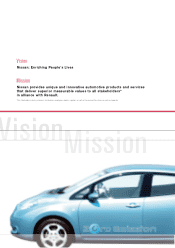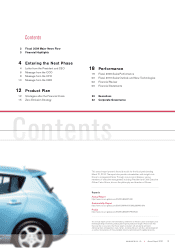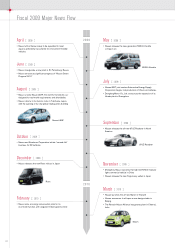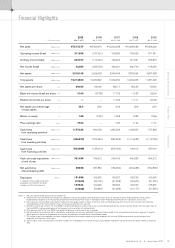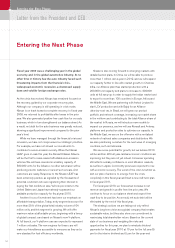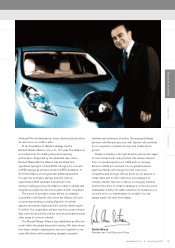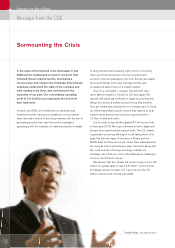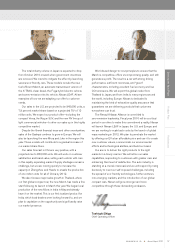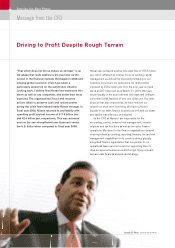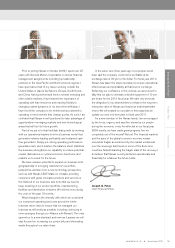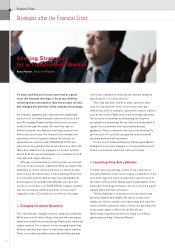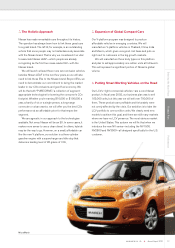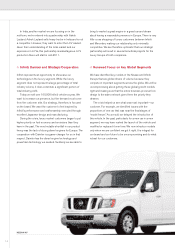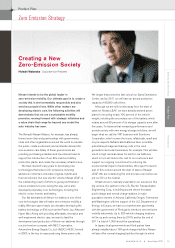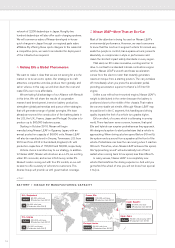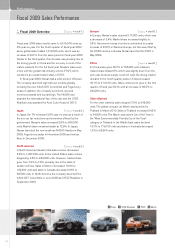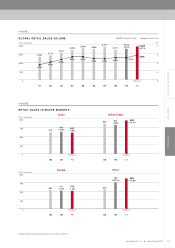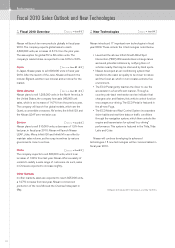Nissan 2010 Annual Report Download - page 12
Download and view the complete annual report
Please find page 12 of the 2010 Nissan annual report below. You can navigate through the pages in the report by either clicking on the pages listed below, or by using the keyword search tool below to find specific information within the annual report.
Chief Recovery OfficerColin Dodge
10
Powering Through the Crisis
Messa efrom the CRO
g
Entering the Next Phase:
Not only were the results met, but they far exceeded our
expectations. In fiscal year 2009, consolidated operating
profit improved to 311.6 billion yen from an operating loss
of 137.9 billion yen in the prior year. We achieved our
monozukuri cost target, helped along by decreases of 134.4
billion yen in purchasing costs, 20.4 billion yen in
manufacturing costs, and 64.5 billion yen in R&D expenses.
Reductions in G&A expense were also a big factor. The
improvement in our income statement also led to our
achieving positive free cash flow of 375.5 billion yen for the
year. We also lowered our capital expenditures by 110
billion yen to 273.6 billion yen, which also contributed to
these results.
Higher sales, which led to an increase in production,
were another contributing factor to the positive results. Our
plants and supply chain team increased total volume by 6.4
percent to 3.282 million units. Another factor was how fast
our manufacturing group and suppliers responded to market
changes and new opportunities. For example, when the
various government stimulus programs emerged worldwide,
we responded quickly and delivered vehicles to those
markets offering subsidies. In contrast, many other
manufacturers took months to respond. That reflects the
DNA of a Japanese manufacturing company and represents
one of Nissan’s core strengths.
The recovery plan we put in place last year were
short-term measures designed to ensure Nissan’s
survival during the financial downturn. The objectives
of our recovery plan were to restore both positive free
cash flow and consolidated operating profit.
Reducing our cost base was a major element of the
recovery plan. One of the main pillars of the plan was to
reduce costs for monozukuri-related functions such as
engineering, purchasing, manufacturing, and supply chain
management by 5 percent. We also wanted to decrease
capital expenditures, as well as G&A costs, during the
downturn.


